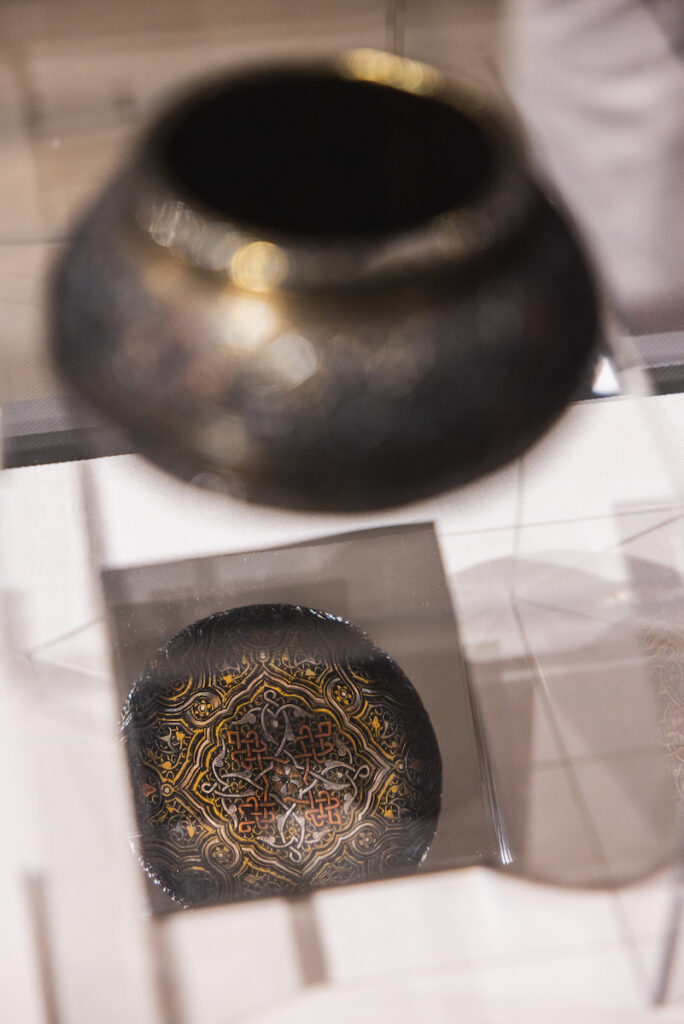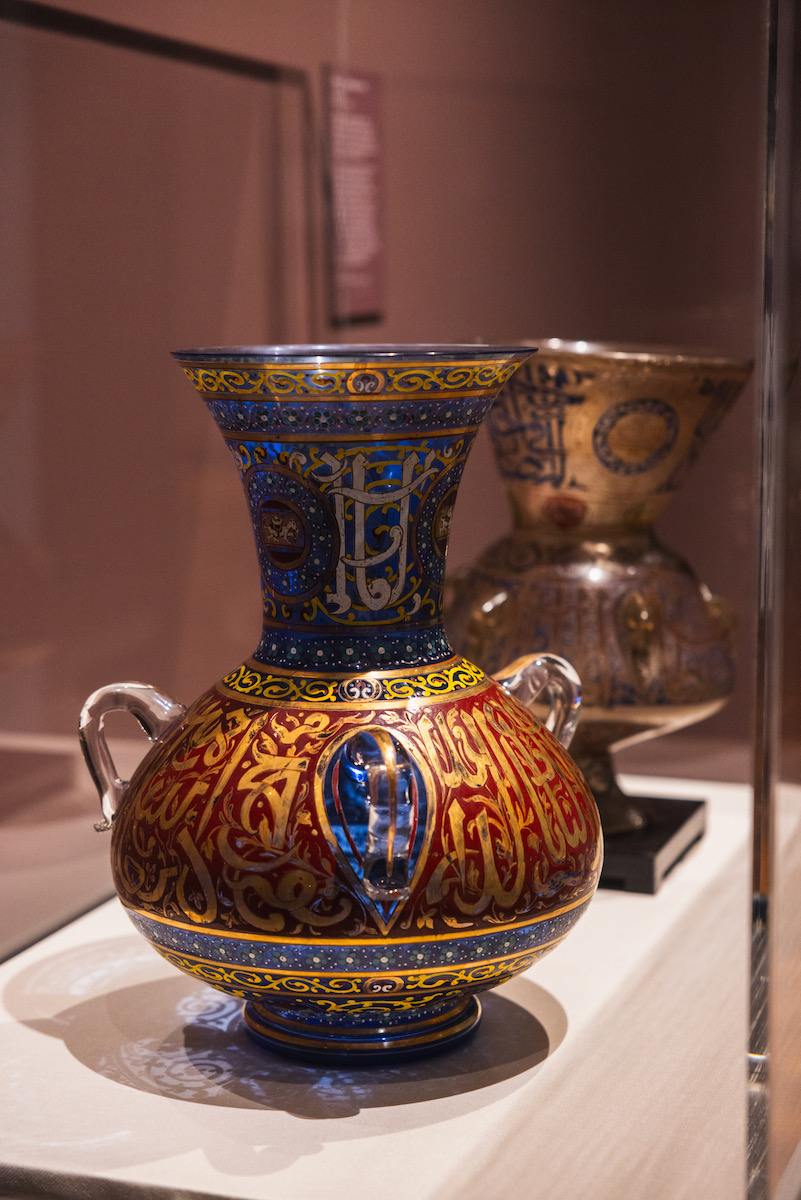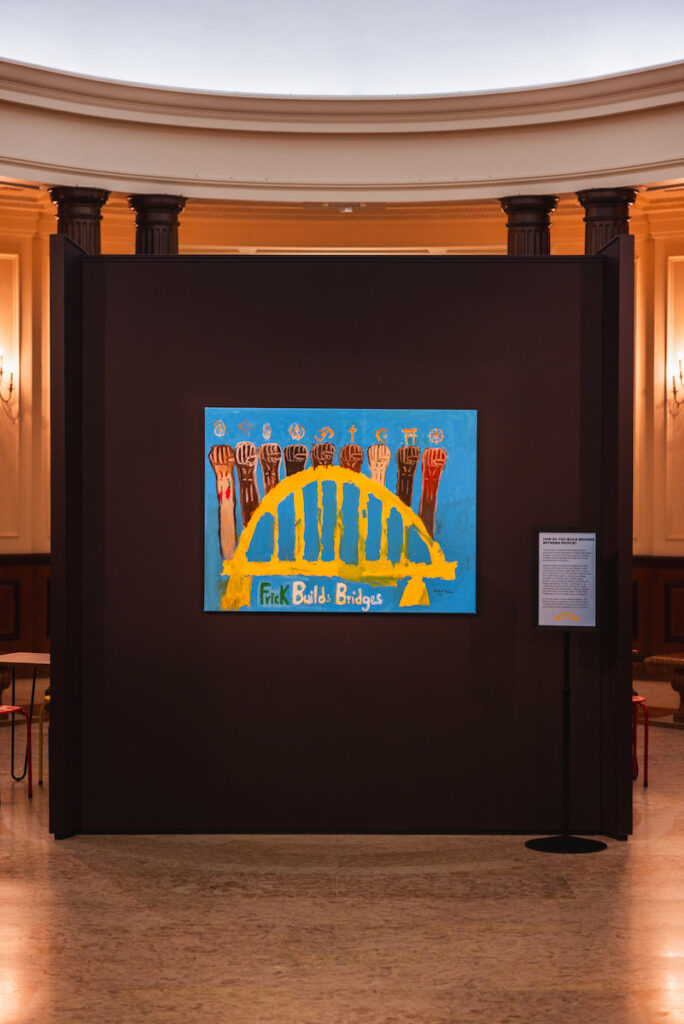Treasured Ornament: 10 Centuries of Islamic Art marked the next steps in a new direction for the Frick Pittsburgh. During the Frick Collection in New York’s closure throughout the year, the Frick Pittsburgh has stepped up to the plate with varied and innovative exhibition programming. The spring’s Vermeer, Monet, Rembrandt displayed never-before-seen Old Master works and reinvigorated them through community engagement and thought-provoking curatorial questions.
Treasured Ornament, a traveling exhibition of historical objects that began its life in Huntington, West Virginia, continues that level of quality. The exhibition is the personal collection of Joseph and Omayma Touma. The Toumas were two Syrian-born academics with a lifelong interest in Islamic art. Together, they created a formidable collection of flatware, ceramics, tapestries, ritual objects, and other items of everyday life.
We recommend going to see the show before it closes on October 20. But, if you don’t get a chance to, Frick Pittsburgh curator Dawn Brean has given TABLE readers some an insider look on what design lovers can find in the show and shares some of her personal highlights.
Curator Dawn Brean Gives An Inside Look at the Frick Pittsburgh’s Treasured Ornament
What are some of the ways Islamic design influenced western design patterns?
Dawn Brean: Islamic design motifs appear frequently in Western design. The vast network of trade routes through Southwest Asia and North Africa facilitated the transmission of ideas, techniques, and raw materials. For example, a cobalt blue pigment mined and used in Iran was exported to China. But it was then used to decorate porcelain objects that were avidly collected and imitated in West Asia, Europe, and beyond.

What are your personal favorite objects in the collection?
Dawn Brean: My favorite object changes every day! But one of the most charming to me is a 19th-century brass bowl from either Egypt or Syria. The bowl is inlaid with a swirling arabesque pattern in silver and copper, an intricate and time-consuming process. Even the bottom of the bowl has ornate decorations. We devised a way to display it over an angled mirror. That way, visitors can enjoy the work in its entirety. The attention to detail the artist paid is truly stunning.
What’s one thing you learned while working on this exhibition?
Dawn Brean: A particular challenge in this exhibition is that so many of the artworks are multisensorial. Imagine handling the rough earthenware with its dense glaze, holding a cool metal bowl stamped with textured patterns, or running your hands across the soft tufted silk on a prayer rug.
When we first started writing about the exhibition, we often referred to the area of work as the Middle East. As I dug deeper, I learned more about the term SWANA (Southwest Asia and Northern Africa). This was a better way to capture the area of land we focused on for the exhibition. And yet, it’s not a perfect term, because there are other predominantly Muslim areas, like Indonesia. There was no perfect way to capture what Islamic art is and means. So, I explored that heavily in the exhibition text and presentation.

Only one object in Treasured Ornament comes from the Fricks themselves, a 14th century vase. It looks almost identical to one of the Toumas’ objects, but there’s a significant difference. Could you talk about the vase from the Fricks’ personal collection and the vase from the exhibition that are displayed beside each other?
Dawn Brean: Although the two vessels share several similarities, one was created in the 14th century by artisans. The other is a decorative vase created in Europe five centuries later. In the 19th century, European imperialism and expanded trade routes led to the influx of artworks imported from Muslim regions to Europe and North America. Western artists sought to emulate the innovative techniques. French glassmakers revived the process of enameling glass and imitated the forms and decoration on examples to which they had access.
The 19th century vase, with its stylized pseudo-Arabic script and scrolling botanical patterns, epitomizes that sense of artistic admiration and appropriation. The 14th century example, which may have originally hung in a mosque or secular building, was purchased by Henry Clay Frick in 1903. The family displayed it as a decorative object, far from its original context.

It’s hard to believe the run is almost over. How has the reception been to the exhibit in the time it’s been up?
Dawn Brean: I really appreciate chatting with visitors in our galleries. There aren’t many opportunities to see Islamic art in Pittsburgh. So, I’m so glad we could bring this exhibition to our city. And I love seeing the community tile wall grow in our galleries.
We’ve also connected with many wonderful partners in the Muslim community here in Pittsburgh. Their meaningful contributions to the exhibition have helped us build something visitors are finding special. The art museum opens with a work by Pittsburgh-based artist Ebtehal Badawi. Badawi created a community-made mural at one of our Summer Friday events as part of her Pittsburgh Builds Bridges initiative. It’s a beautiful way to set the stage for what I hoped would be a major takeaway of the exhibition–that the beauty of art and everyday objects can be a bridge for understanding, compassion, and goodwill.
Story by Emma Riva / Photography by Seth Culp-Ressler, courtesy of the Frick Pittsburgh
Subscribe to TABLE Magazine‘s print edition.

